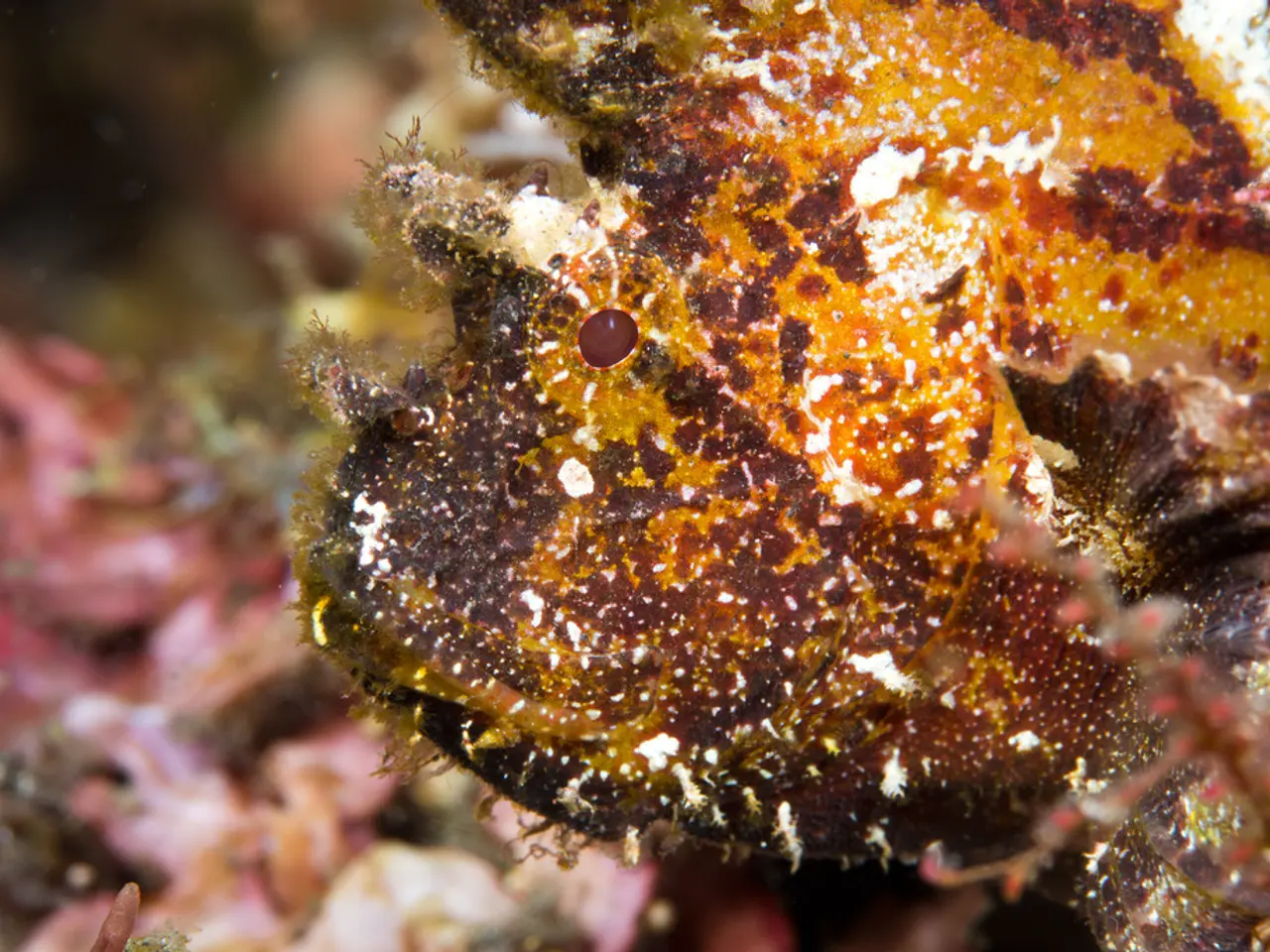Underwater robot broadcasts spectacle of Patrick Star and cross-dressing crustacean for captivated audiences in Argentina
The deep sea holds many mysteries, and the Mar del Plata Canyon, a submarine gorge plunging nearly 4,000 meters deep, is no exception. A groundbreaking Argentine-American scientific mission, funded through collaborations like that with the Schmidt Ocean Institute, is currently exploring this enigmatic underwater landscape.
The expedition, which began some time ago, has made incredible findings, including the sighting of animals never before recorded in this area, alien-like underwater landscapes, and surprising behaviors that have left even the most experienced scientists intrigued. Among these discoveries, cold-water corals with colors similar to those found in the Caribbean at a depth of 3,000 meters have been noted by marine biologist and painter Pablo Penchaszadeh, who is on board the mission.
The mission, part of the GEMPA deep sea study group, is being carried out aboard the Schmidt Ocean Institute's "Falkor (too)" ship. Aboard this vessel, scientists operate an underwater robot capable of descending to a depth of 4,500 meters. This robot, equipped with robotic arms, collects biological samples and sends back high-definition images in real time.
The team, consisting of 25 scientists primarily from Argentina's CONICET (National Scientific and Technical Research Council), is making significant strides in marine biology research. The mission opens new avenues for studying deep-sea ecosystems in the Southwest Atlantic, an area previously almost unexplored. The biological sampling and environmental analyses contribute to understanding biodiversity, ecosystem functions, and anthropogenic impacts such as microplastic pollution in deep marine environments.
The live stream of the expedition has exceeded one million views per day since Thursday, a testament to the public's fascination with the discoveries being made. The popularity of the broadcast is seen as a "beacon of light" for science in Argentina, a country where science is currently facing financial and support challenges. Since libertarian President Javier Milei took office in December 2023, CONICET's budget has fallen by 21 percent, salaries have plummeted by 35 percent, and the cuts have led to an exodus of scientists.
Despite these difficulties, the passion for science remains strong. Tomas Atilio Luppi, a biologist at the CONICET-affiliated marine and coastal research institute in Mar del Plata, has expressed that seeing people being passionate about their job is attractive. This sentiment is echoed by the team on board the Falkor (too), who are dedicated to unveiling the secrets of the Mar del Plata Canyon.
The expedition will end on August 10, but the discoveries made will undoubtedly contribute to the advancement of scientific knowledge of deep-sea biodiversity and environmental conditions off Argentina’s coast. Strange-looking creatures, never-before-seen landscapes, and a wealth of data are just the beginning of what this pioneering mission has to offer.
As the underwater oasis, where the cold Malvinas current and warm Brazil current converge, is observed in real time for the first time by human eyes, remotely, it serves as a reminder of the wonders that still lie hidden in the depths of the ocean. The exploration of the Mar del Plata Canyon is more than just a scientific mission; it is a testament to human curiosity and the pursuit of knowledge in the face of adversity.
*References [1] Schmidt Ocean Institute [2] CONICET [3] Universidad de Buenos Aires [4] Falkor (too)
- The groundbreaking scientific mission in the Mar del Plata Canyon, funded by collaborations like the Schmidt Ocean Institute, is investigating the deep sea's enigmatic underwater landscapes and contributing to the advancement of environmental science.
- Technology is playing a crucial role in this exploration, with the team aboard the Schmidt Ocean Institute's "Falkor (too)" ship operating an underwater robot that can descend 4,500 meters deep and collect samples in real time.
- Despite political challenges faced by science in Argentina, the expedition has garnered significant attention and support from the public, as evidenced by the live stream's daily views surpassing one million since Thursday.
- The Mar del Plata Canyon study is also a part of the general news and pop-culture discussion, with “sci-fi and fantasy” enthusiasts imagining alien-like underwater creatures and landscapes in this deep-sea oceanic trench.
- As preparations for the mission's conclusion on August 10th approach, the expedition team acknowledges the importance of their findings for expanding science education and self-development, particularly in Argentina.
- To further emphasize the significance of the Mar del Plata Canyon expedition, social media platforms are abuzz with discussions about the discoveries, fueling the fire of human curiosity and underscoring the importance of political support for scientific research.




